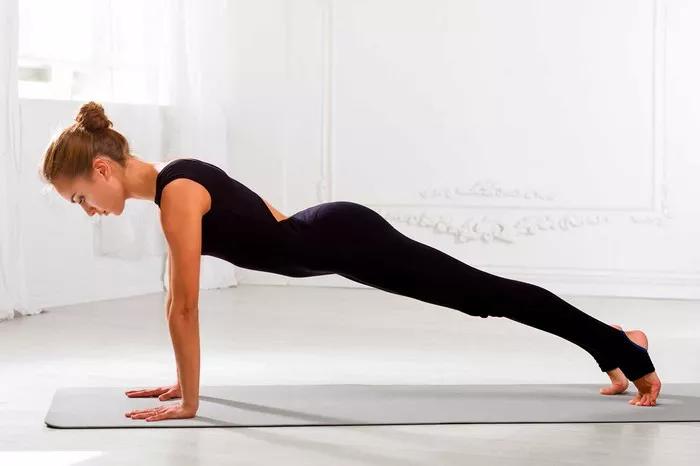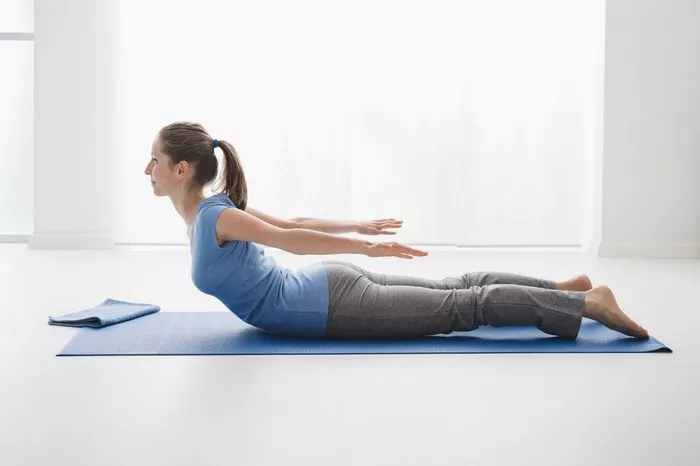Yoga, an ancient practice with roots tracing back thousands of years, offers a myriad of poses designed to enhance physical strength, mental clarity, and spiritual well-being. Among these poses, the plank pose stands out as a foundational posture with numerous benefits for the body and mind. In this article, we delve into the origins, symbolism, benefits, variations, step-by-step instructions, and precautions of the plank pose, providing a comprehensive understanding of this fundamental yoga posture.
Origins and Symbolism
The plank pose, known as Phalakasana in Sanskrit, finds its origins in the ancient practice of yoga. Phalaka means “plank” or “board,” indicating the posture’s resemblance to the straight and sturdy structure of a plank of wood. Like many yoga poses, the plank has symbolic significance beyond its physical form.
Symbolically, the plank represents stability, strength, and resilience. Just as a plank provides a firm foundation in construction, the plank pose offers practitioners a stable base from which to build strength and endurance. Additionally, the plank embodies the idea of remaining steady and unwavering in the face of challenges, both on and off the yoga mat.
Physical and Mental Benefits
The plank pose offers a wide range of physical and mental benefits, making it a valuable addition to any yoga practice or fitness routine.
Physically, the plank strengthens the core muscles, including the abdominals, obliques, and lower back. By holding the body in a straight line, the pose also engages the muscles of the arms, shoulders, chest, and legs, promoting overall strength and stability. Regular practice of the plank can improve posture, balance, and coordination, leading to better alignment and reduced risk of injury in everyday activities.
Mentally, the plank pose cultivates focus, concentration, and determination. Holding the posture requires mindfulness and attention to the breath, fostering a sense of presence and awareness in the present moment. As practitioners develop the physical strength to hold the plank for longer durations, they also build mental resilience and inner strength, which can be applied to challenges both on and off the yoga mat.
Variations and Modifications
While the traditional plank pose involves balancing on the hands and toes in a straight line, there are numerous variations and modifications to accommodate practitioners of all levels and abilities.
One common modification is the forearm plank, where the practitioner rests on the forearms instead of the hands, reducing wrist strain and increasing stability. Another variation is the knee plank, where the practitioner lowers the knees to the ground, providing additional support for beginners or those with limited strength.
For advanced practitioners seeking a greater challenge, variations such as side plank, reverse plank, and one-legged plank offer opportunities to further engage different muscle groups and improve balance and coordination.
Regardless of the variation or modification chosen, the key is to maintain proper alignment and engage the core muscles to reap the full benefits of the pose.
Step-by-Step Instructions
To practice the traditional plank pose, follow these step-by-step instructions:
1. Begin in a tabletop position with the wrists directly under the shoulders and the knees under the hips.
2. Engage the core muscles and step the feet back, straightening the legs and aligning the body into a straight line from head to heels.
3. Press firmly into the hands, spreading the fingers wide for stability.
4. Keep the neck in line with the spine, gazing slightly forward to maintain a neutral neck position.
5. Hold the pose for 30 seconds to 1 minute, breathing deeply and evenly.
6. To release, gently lower the knees to the ground and rest in child’s pose or downward-facing dog.
Throughout the pose, focus on maintaining a strong and stable core, avoiding sagging in the lower back or shoulders. If necessary, adjust the placement of the hands or feet to find a comfortable and sustainable position.
Precautions and Contraindications
While the plank pose offers numerous benefits, it may not be suitable for everyone, especially those with certain medical conditions or injuries. Practitioners should exercise caution and consult with a healthcare professional before attempting the plank pose if they have:
1. Wrist, elbow, or shoulder injuries: The plank pose requires weight-bearing on the hands and arms, which may exacerbate existing injuries or conditions.
2. Lower back pain: Holding the plank for an extended period can strain the lower back if proper alignment and engagement of the core muscles are not maintained.
3. High blood pressure or heart problems: The plank pose can increase blood pressure and heart rate, potentially posing risks for individuals with cardiovascular issues.
Additionally, pregnant individuals should approach the plank pose with caution, especially in later stages of pregnancy, and may opt for modifications or alternative poses that provide adequate support and safety.
Conclusion
In conclusion, the plank pose is a foundational yoga posture with deep roots in tradition and symbolism. By practicing the plank regularly and mindfully, practitioners can cultivate physical strength, mental resilience, and a sense of stability and balance in both body and mind. However, it is essential to approach the pose with awareness, respect, and attention to individual limitations and needs, ensuring a safe and beneficial practice for all.
FAQs:
What does the plank pose symbolize?
The plank pose symbolizes stability, strength, and resilience. Its resemblance to a sturdy plank of wood reflects the idea of providing a firm foundation, both physically and mentally. Practicing the plank encourages steadiness and unwavering determination, qualities that extend beyond the yoga mat into daily life.
What are the disadvantages of planking pose?
While the plank pose offers numerous benefits, there are potential disadvantages, especially if practiced incorrectly or excessively. Some individuals may experience wrist, elbow, or shoulder discomfort due to the weight-bearing nature of the pose. Moreover, improper alignment or overexertion can strain the lower back, leading to discomfort or injury. It’s essential to approach the plank pose mindfully, listening to the body and avoiding excessive strain or discomfort.
Is it OK to do plank everyday?
While doing plank pose daily can be beneficial for building core strength and stability, it’s essential to vary your routine to prevent overuse injuries and allow for proper recovery. Incorporating other exercises and yoga poses that target different muscle groups can help maintain a balanced and sustainable practice. Additionally, listening to your body and taking rest days when needed is crucial for avoiding burnout and promoting long-term health and well-being.















